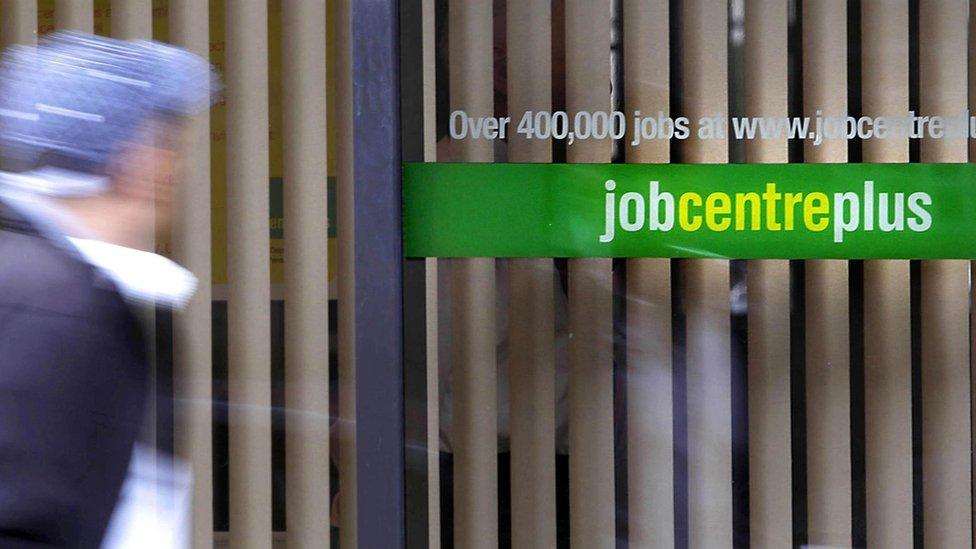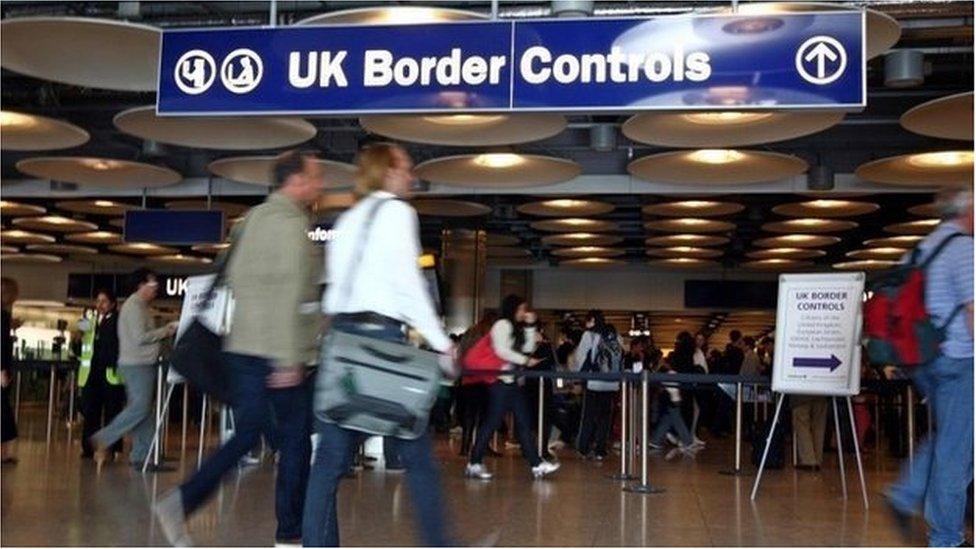Northern Ireland 'effectively at full employment'
- Published
- comments

Northern Ireland's unemployment rate is close to a record low
Northern Ireland is now "effectively at full employment", a leading economist has claimed.
Ulster Bank's Richard Ramsey made the comment as the latest official figures showed the unemployment rate was 3.5% in the three months between December and February 2018.
That represents a fall of almost two percentage points compared to the same period last year.
The level is close to a record low.
The equivalent UK unemployment rate is 4.2% and the relevant rate in the Republic of Ireland is 6.1%.
In the aftermath of the 2008 recession, the unemployment rate in Northern Ireland peaked at 8.2%.

What is full employment?
Full employment can be defined in a number of ways but it does not mean that absolutely everybody has a job.
Firstly, this is because of "frictional unemployment", which refers to people who are temporarily out of work due to the process of changing jobs.
There can also be "structural unemployment", which means that even in a strongly-growing economy some people cannot find work due to inflexibility in the labour market or other economic, geographic or political impediments.
So, typically, an unemployment rate of 3% or less would be considered to represent full employment.

The latest figures showed the employment rate, which is the proportion of people aged 16 to 64 in work, increased over the quarter and over the year to 69.5%
Mr Ramsey said that skills shortages are expected to be a growing issue in the year ahead.
However, Northern Ireland still has a much greater economic inactivity rate than the UK as whole.
That is the proportion of working-age people who are not working and not seeking or available to work.
The inactivity rate in Northern Ireland stands at 27.9% compared to a UK rate of 21.2%.
Of the economically inactive, 82% did not want a job while 18% did.
Of those who did not want to work, 30% were long-term sick or disabled, 27% were students, 22% were looking after the family or home, 12% were retired and 9% cited another reason for inactivity.
- Published19 March 2018

- Published21 February 2018
